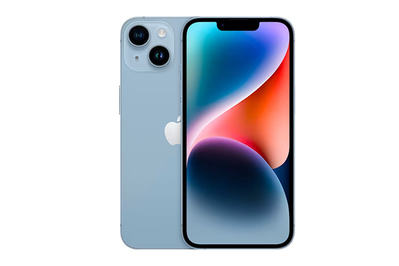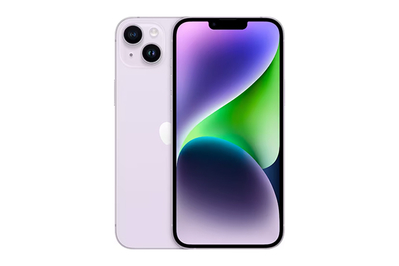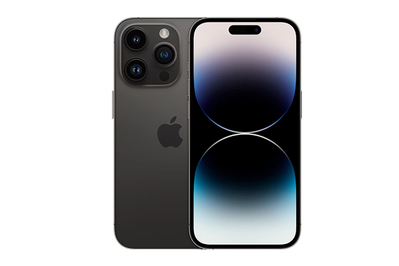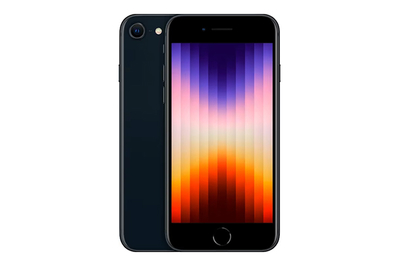If you have an iPhone that you’re happy with, keep it. We don’t think you should upgrade just because Apple has released new phones.
But if your current phone is running too slow or is damaged, or if you’re simply ready for an upgrade and want a new phone now, we recommend the iPhone 14. It represents a relatively minor upgrade over 2021’s iPhone 13, but the improved cameras and better battery life build on the already great design and fast processing, with no drawbacks.
Our pick
Apple iPhone 14 (128 GB)
The iPhone 14 has a very good two-lens camera that can use Night Mode for impressive low-light photos, plus a plenty-fast processor, long battery life, and a large, edge-to-edge OLED screen.
Apple iPhone 14 Plus (128 GB)
The iPhone 14 Plus offers everything great about the iPhone 14 but is better suited for larger hands and has longer battery life.
Apple’s iPhone 14 is just as fast as the more-expensive Pro models for almost any task, and it should be plenty snappy for daily use for at least the next four years. Even with its large, 6.1-inch display, its battery can get almost anyone through a full day without needing to recharge. The iPhone 14’s two rear cameras—one standard wide-angle, one ultrawide—are excellent, and they offer better low-light performance. Although the iPhone 14 isn’t significantly better than the iPhone 13 and doesn’t represent a noticeable upgrade in most ways if your current phone is a year or two old, it commands only a $50 premium when you compare models of the same storage capacity, and we think it’s worth that investment.
The iPhone 14 Plus mirrors the iPhone 14 Pro Max, with a 6.7-inch display size and a larger battery than the base iPhone 14 or 14 Pro. Even with its larger size, it actually weighs slightly less than the smaller, 6.1-inch iPhone 14 Pro. That larger battery means the iPhone 14 Plus has the best battery life of any iPhone 14 model, which makes it an ideal option for those who prefer a larger screen and don’t want to pay the extra money for an iPhone 14 Pro Max.
Upgrade pick
Apple iPhone 14 Pro (128 GB)
The iPhone 14 Pro has one of the best screens of any iPhone, plus the Dynamic Island (iPhone’s new way of showing active calls, timers, Face ID status, and more at the top of your screen), and its cameras are higher quality than those of the iPhone 14 and 14 Plus. It may be a little faster for some graphics-heavy tasks, but otherwise it mostly matches the rest of the iPhone 14 family in features.
Buying Options
*At the time of publishing, the price was $999.
The iPhone 14 Pro offers everything the standard iPhone 14 offers but adds a brighter ProMotion screen. The iPhone 14 Pro also includes an always-on display to view notifications, weather, and other widgets without having to press the power button or move the device. The iPhone 14 and 14 Plus use last year’s A15 chipset, while the iPhone 14 Pro and Pro Max utilize Apple’s newest A16 Bionic processor. The most notable addition to the Pro line is the pill-shaped visual element near the top of the screen that Apple calls the Dynamic Island, which showcases active calls, audio playback, and other interactive elements. This takes various information and presents it in an easily accessible, always-viewable design element. Apple has removed the “notch” present in other versions of the iPhone containing the front-facing camera and depth sensor, instead placing them in the screen itself. Going Pro also gives you a new 48-megapixel main camera, a 12-megapixel ultrawide camera, and a 12-megapixel telephoto camera capable of up to 6x optical zoom. If you’re buying this phone for its professional capabilities rather than just its physical size, choose the 256 GB (or larger) storage capacity.
Budget pick
Apple iPhone SE (3rd generation, 128 GB)
The 3rd-generation iPhone SE has a faster processor than you might expect in such a comparatively inexpensive phone, as well as a good camera—and it costs half the price of the iPhone 14. Its low price, small size, and Touch ID fingerprint reader make it an easy upgrade for people who have older iPhones or for anyone wanting to spend less, but its battery doesn’t last as long.
The iPhone SE (3rd generation) is the ideal choice if you want a small phone, prefer a fingerprint reader to Face ID, or don’t want to pay as much for a new smartphone as you would for a decent laptop. The iPhone SE is significantly cheaper than the iPhone 14, but in many situations it feels just as fast. It lacks the iPhone 14’s second ultrawide lens and Night Mode camera setting, so capturing good photos in dark environments is harder. If you use your phone for more power-hungry activities such as games, video, or voice or FaceTime calls over LTE/5G, the smaller battery may not last all day. However, whereas cheap Android phones often stop getting software updates soon after purchase, even the least expensive iPhones, like the SE, will receive iOS support for many years.








